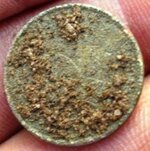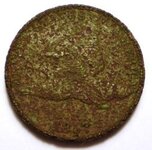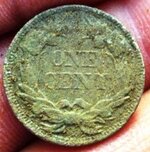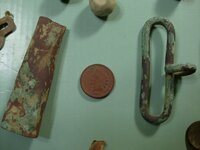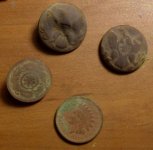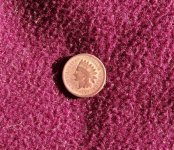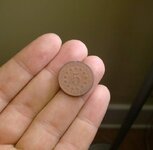minton7
Hero Member
hit a flying eagle cent.... back in completely smooth.... on the front u can see the eagle outline.. nuttin else.... is red.......... must be the nickle part of it making it turn red i nthe ground..... any one know how to clean this in hopes of seein a date??


